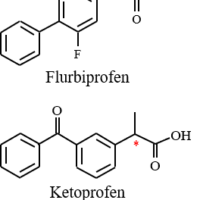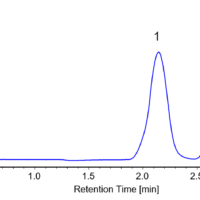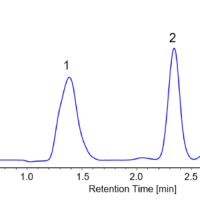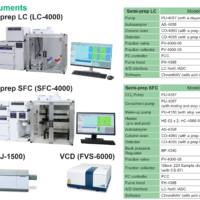Introduction
Supercritical fluid chromatography (SFC) uses carbon dioxide as the main solvent in the mobile phase and is characterized by its ability to maintain high separation efficiency even when performing analyses at high flow rates (linear velocity). Among the sample components that are separated and fractionated by taking advantage of this feature are chiral compounds. To investigate the optimal separation conditions for chiral compounds, a screening method is used to comprehensively analyze individual substances using solvents and columns. Recently, chiral columns with a 3 µm particle size have been developed for SFC, and are expected to provide faster and more efficient chiral-compound separation than conventional SFC using 5 µm particle-size columns.
In this application note, we used a JASCO SFC system with the Method Scouting Support Program, an add-in software for ChromNAV Ver. 2. Three modifier solvents and 10 chiral columns with a 3 µm particle size for high speed and high efficiency were used for fast screening of flavanone, a type of flavonoid.
The circular dichroism (CD) detector used is capable of outputting UV chromatograms, CD chromatograms, and the g-factor (CD/UV ratio), in real time. In the CD chromatogram, different optical isomers produce peaks with opposite signs (positive or negative).
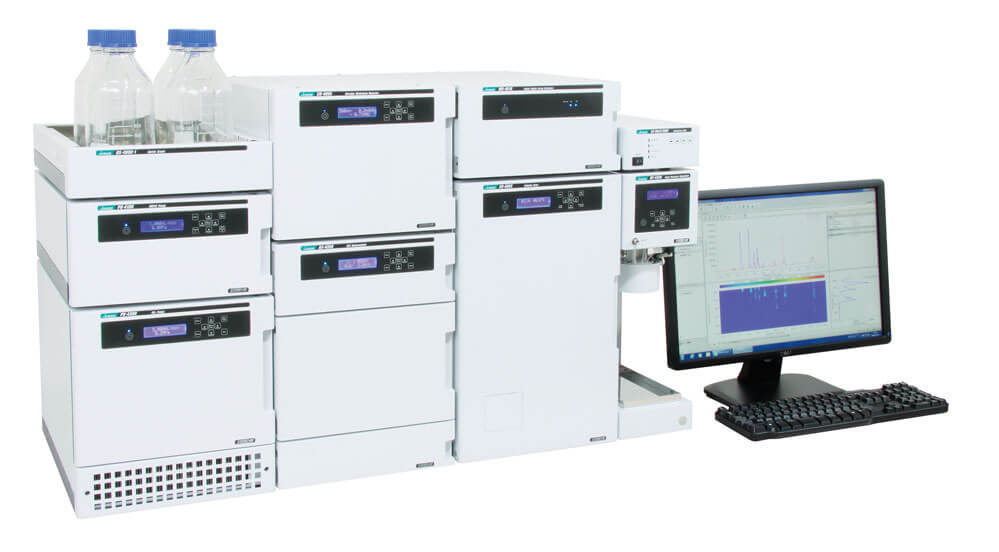
SFC method scouting system
Experimental
<Instruments>
CO2 pump: PU-4380
Modifier pump: PU-4185*
Autosampler: AS-4350
Column oven: CO-4065*
PDA detector: MD-4010*
CD detector: CD-4095*
BP regulator: BP-4340
* with option units
<SFC Conditions>
Column: CHIRALPAK IA/SFC, IB-N/SFC, IC/SFC, ID/SFC, IE/SFC, IF/SFC, IG/SFC, IH/SFC, IJ/SFC, IK/SFC (3.0 mmI.D. x 50 mmL, 3 µm)※
Eluent : Carbon dioxide / modifier (75/25)
Modifier: A; Methanol B; Acetonitrile / ethanol (80/20) C; t-Butyl methyl ether / ethanol (80/20)
Flow rate: 1.2 mL/min
Column temp.: 40 ºC
Wavelength: 210 nm (MD-4010) 310 nm (CD-4095)
Back pressure: 15 MPa
Inj. volume: 1 µL
Sample: 0.5 mg/mL flavanone in methanol
* CHIRALPAK is a trademark or registered mark of Daicel Corporation.
<Structure>
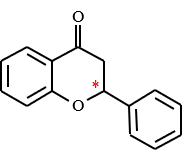
Flavanone (*: Chiral center)
<Schematic Diagram>
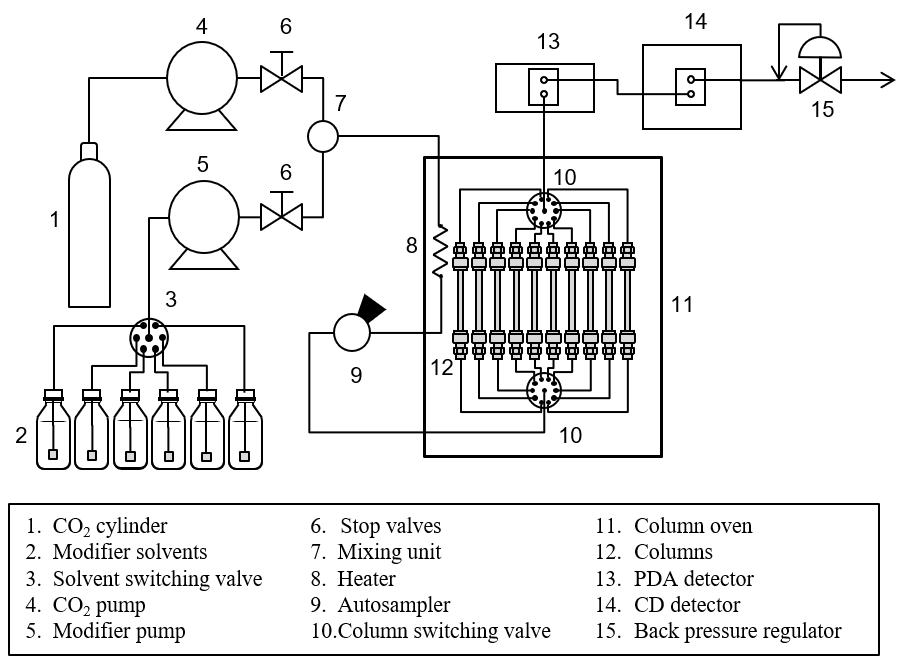
Keywords
Flavanone, SFC, screening, method scouting, chiral separation, CD detector, CHIRALPAK, 3 µm
Results
The column stabilization time during screening was set to 10 min only for the first column after solvent changeover and 3 min for the other columns, taking into account solvent substitution in the system. The analysis time was set to 3.0 min.
Figure 1-1 shows the screening results obtained using a photodiode array (PDA) detector at a wavelength of 210 nm, and Figure 1-2 shows those obtained using a CD detector at a wavelength of 310 nm. Each row of chromatograms represent a different modifier solvent, and each column of chromatograms represents a different chiral column. In the CD chromatograms, different optical isomers produce signals with opposite signs.
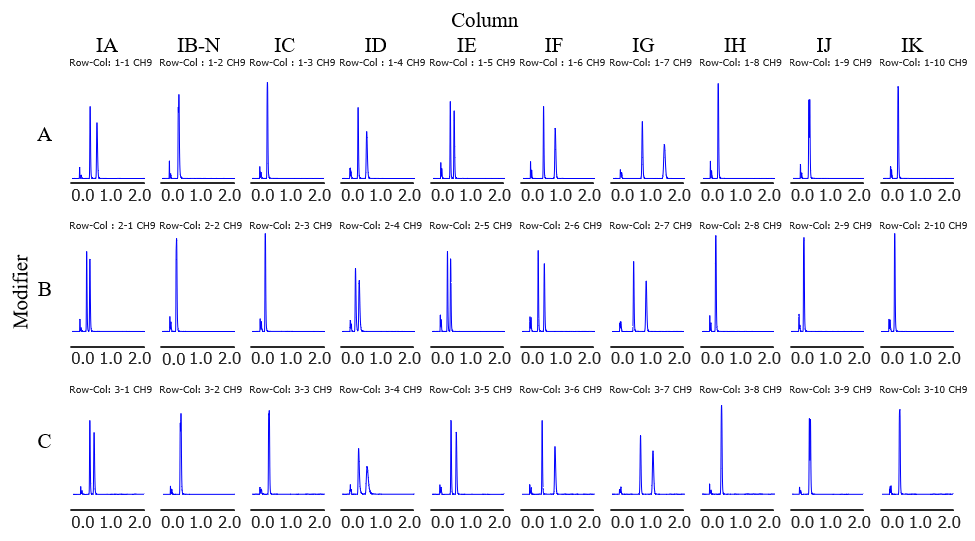
Fig. 1-1 Chromatograms of flavanone obtained using method scouting system (PDA detection wavelength: 210 nm)
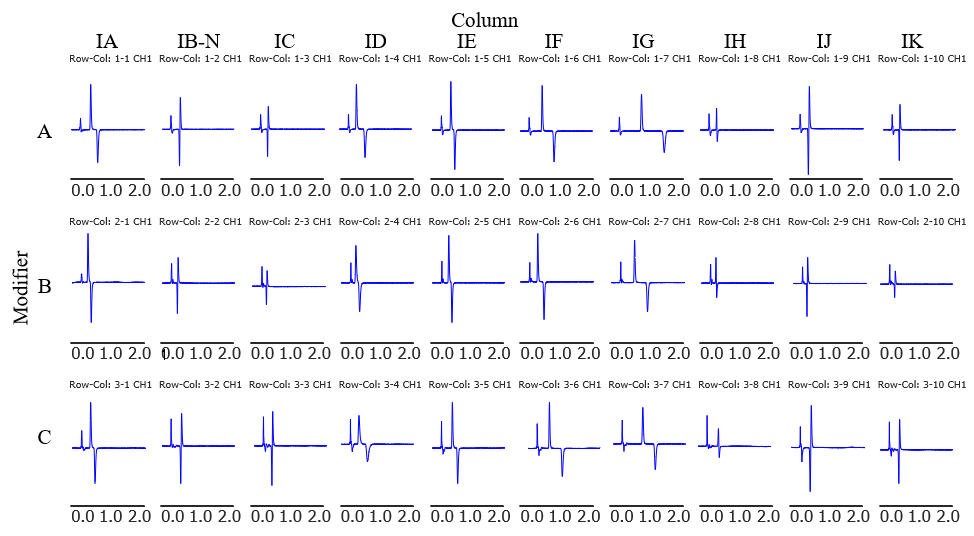
Fig. 1-2 Chromatograms of flavanone obtained using method scouting system (CD detection wavelength: 310 nm)
Table 1 shows the degree of separation of flavanones under each condition. Results with a resolution of 1 or less are marked as incomplete separation (I.S.). The highest degree of separation was obtained when methanol was selected as the modifier and CHIRALPAK IG/SFC as the column. On the other hand, when the CHIRALPAK IA, ID, IE or IF column was selected, separation and elution within 1 min was possible.
Table 1 Comparison of resolution
| Column | |||||||||||
| IA | IB-N | IC | ID | IE | IF | IG | IH | IJ | IK | ||
| Modifier | Methanol | 4.26 | I.S. | N.S. | 4.87 | 2.96 | 7.11 | 9.18 | N.S. | I.S. | N.S. |
| Acetonitrile / ethanol | 2.52 | N.S. | N.S. | 2.02 | 2.44 | 4.60 | 7.07 | N.S. | N.S. | N.S. | |
| t-Butyl methyl ether / ethanol | 2.86 | I.S. | I.S. | 2.86 | 3.56 | 7.38 | 5.97 | N.S. | I.S. | N.S. | |
I.S.: Incomplete Separation, N.S.: Not Separated
Table 2 shows the results of a comparison of the study time and solvent usage when screening under conventional conditions using a chiral column with a particle size of 5 µm (4.6 mmI.D. x 150 mmL) and the new conditions using a chiral column with a particle size of 3 µm (3.0 mmI.D. x 50 mmL).
By using a 3 µm particle-size filler and downsizing the column, the analysis time was reduced to half of that for the conventional method for the same number of columns, and the screening time with 10 different columns was also reduced to 2/3. Solvent consumption was reduced to 1/5 to 1/3.
Table 2 Comparison of study time and solvent usage for particle sizes of 3 µm and 5 µm
| Screening conditions | Analysis time | Stabilization time | Screening time | Solvent usage |
| 5 µm particle size, 6 columns x 3 solvents | 6 min | 10 min | 4.8 hr | 220 mL |
| 3 µm particle size, 6 columns x 3 solvents | 3 min | 3 min(10 min*) | 2.2 hr | 40 mL |
| 3 µm particle size, 10 columns x 3 solvents | 3 min | 3 min(10 min*) | 3.4 hr | 60 mL |
* First column after modifier solvent switch is set for 10 min for solvent replacement time in the system.
Conclusion
The use of a downsized chiral column with a 3 µm particle-size charge in SFC reduced the time required for method scouting to select appropriate separation conditions.
The SFC method scouting system can be effectively used to explore separation conditions for chiral compounds because SFC allows separation studies in a shorter time compared to HPLC.

